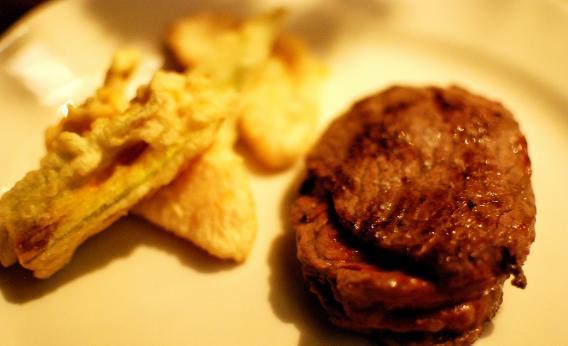A reader asks: Why is food that is browned tastier than the same food cooked to the same temperature via steaming, boiling, or microwaving?
Thank the Maillard reaction (which occurs most readily when the surface temperature of food is more than 300 degrees Fahrenheit) and caramelization (which kicks in at about 320 F).* These chemical reactions not only bring about a color change, they also produce hundreds of flavor compounds that create the rich, savory notes and appetizing aromas we associate with roasted, grilled, and seared dishes—notes and aromas that are noticeably absent from foods cooked by wet methods like steaming, boiling, and poaching.
For a food to reach such high surface temperatures, it must be fairly dry on the outside. When in direct contact with a hot skillet or surrounded by the scorching air of a 400 F oven, the water molecules on the surface of foods quickly vaporize, resulting in the familiar sizzling sound of searing or roasting foods. Once all the moisture has evaporated, the dehydrated exterior of the food becomes hot enough to trigger the Maillard reaction in just a few minutes.
By contrast, foods cooked by wet methods are only able to reach 212 F, the boiling point of water. (The Maillard reaction can take place at lower temperatures, but it takes much, much longer, such as when meat broth develops a dark color and rich flavors after hours of simmering.) So steak grilled to medium rare (135 F) will taste, and look, quite different from a steak poached to the same internal temperature, since the exterior of the former will have reached a much higher temperature.
So what’s the difference between the Maillard reaction and caramelization? The Maillard reaction takes place only when both protein and carbohydrates or sugars are present. Cooked at high heat, protein breaks down into its building blocks, amino acids, which then react with a group of sugars known as simple sugars. (Ribose, which is found in beef, pork, salmon, chicken, and many types of mushrooms, is one example of a simple sugar.) The reacting amino acids and sugars rearrange themselves to form ring-type structures that reflect light in such a way that the food takes on a brown hue. These transformations also produce a plethora of volatile flavor and aroma compounds, which combine with one another to produce even more nuanced tastes and smells. Ranging from malty, grassy, and chocolaty to oniony, meaty, and earthy, they depend on the exact composition of particular foods.
Unlike the Maillard reaction, caramelization is exclusively the breakdown of sugar molecules under high heat. Sugars such as glucose and sucrose unravel, and a wealth of sweet, bitter, and nutty flavor molecules are formed.
The ratio of the Maillard reaction to caramelization that transpires on a piece of food depends on its protein and carbohydrate content. Carrots, for example, have lots of carbohydrates, so roasting these root vegetables will result in considerably more caramelization than Maillard compounds. Seared steak, on the other hand, will have been browned and enriched mostly from the Maillard reaction.
Not all dry cooking methods produce browned and ultra-flavorful foods. Microwaves generate electromagnetic waves, causing water molecules within foods to vibrate, which in turn produces enough heat to cook muscle or vegetable tissue. Unlike the air in conventional ovens, the air in microwaves is not heated, so it can’t brown the surface of most foods. (Sliced bacon and very thin slices of vegetables and fruit are exceptions: Since they dehydrate easily while cooking, they are able to reach the high temperatures needed for the Maillard reaction and even caramelization.)
Food Explainer thanks Jeff Culbertson of Washington State University.
Have a question about something you’re eating or drinking? Send it to slatefoodexplainer@gmail.com.
Previously from the Food Explainer:
Why Does Microwaving Water Result in Such Lousy Tea?
What’s the Difference Between Yogurt and “Cultured Dairy Blend”?
Why Does Tomato Sauce Splatter When It Cooks?
Why Does Steam Make Bread Light and Crusty?
Why Does Eating Hot Chilies Make My Nose Run?
Why Are Some Boiled Eggs Easier To Peel Than Others?
Why Does Fish Sauce Have an Expiration Date?
Why Is Cheese Yellow When Milk Is White?
Correction, Aug. 1, 2013: This post originally implied that the Maillard reaction occurs only when the surface temperature of a food is above 300 degrees Fahrenheit. While it occurs most readily above 300 degrees, it can also occur at lower temperatures. (Return to the corrected sentence.)
